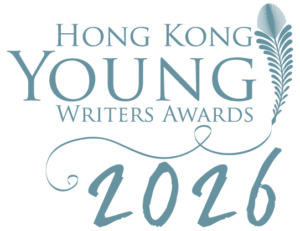A panel of judges drawn from educational institutions, published authors and Hong Kong independent publishing houses will select the winning entries.
School and student names will be removed from all the entries submitted to the judges so that the judging process is fair.
All entries will be judged against the following criteria for each category detailed below:
__________________________________________________________________________
Different Learning Abilities:
Fiction and Poetry Judging Criteria
We look for imagination:
Has the writer created living, breathing characters in a compelling story line? 50 per cent.
We look for originality:
While we allow children to use popular children’s literature scenarios, such as school stories, pony stories, fairy stories, and so on, we still ask: does the story feel new, fresh and unexpected? 50 per cent.
Non-Fiction Judging Criteria
We look for factual accuracy:
Does the literary piece demonstrate thorough and accurate research? Are all the facts representative of history and actual events? 80 per cent.
We look for originality:
Is the literary piece original and convey the author’s message? 20 per cent.
_____________________________________________________________________________________
All Other Groups:
Fiction Judging Criteria
We look for imagination:
Has the writer created living, breathing characters in a compelling storyline? Does the tale wrap up its plot threads in a satisfying way? 20 per cent.
We look for verbal skills:
Is the text interesting, thoughtful, and appropriate, showing good judgment in the choice of words and development of the plot? 20 per cent.
We look for originality:
While we allow children to use popular children’s literature scenarios, such as school stories, pony stories, fairy stories, and so on, we still ask: does the story feel new, fresh and unexpected? 15 per cent.
We look for style:
Does the writer have a distinctive voice, a consistent tone, and palpable confidence in the way his or her material is delivered? 10 per cent.
We look for technical accuracy:
Has the writer shown that she / he has paid attention to spelling, punctuation, grammar and related items? Have the guidelines on word length and similar factors been followed? 15 per cent.
We look for intangible magic:
Since good short stories are always greater than the sum of their parts, we examine the overall reading experience: was it enjoyable, transformative, memorable? 20 per cent.
_________________________________________________________________________
Non-Fiction Judging Criteria
We look for the development of ideas:
Has the writer detailed a main and central idea that is fully articulated? Are the ideas developed thoroughly and presented meaningfully? 20 per cent.
We look for factual accuracy:
Does the literary piece demonstrate thorough and accurate research? Are all the facts representative of history and actual events? 20 per cent.
We look for verbal skills:
Does the writer use interesting, thoughtful and appropriate text? Is excellent word choice used which precisely conveys the author’s meaning? 20 per cent.
We look for organisation:
Has the writer shown a progression of thought in a clear and logical way? Does the organisation of the literary piece enhance the author’s message? 15 per cent.
We look for originality:
Is the literary piece original and convey the author’s message in a refreshing way? 15 per cent.
We look for technical accuracy:
Has the writer shown that she / he has paid attention to spelling, punctuation, grammar and related items? Have the guidelines on word length and similar factors been followed? 15 per cent.
__________________________________________________________________________
Poetry Judging Criteria
We look for originality:
Is the poem interesting? Has the poet taken mundane items and created something new from them? Does the poem have a distinct narrative, descriptive or thematic thrust? 15 per cent.
We look for language:
Has the writer used rich, vivid and evocative language? Are nouns and verbs used distinctively to create a poetic effect? 20 per cent.
We look for poetic techniques:
Has the writer used poetic techniques to effectively reinforce the theme? 20 per cent.
We look for style:
Does the writer have a distinctive voice, a consistent tone, and palpable confidence in the way his or her material is delivered? 10 per cent.
We look for technical accuracy:
Has the writer shown that she / he has paid attention to spelling, punctuation, grammar and related items? Have the guidelines on word length and similar factors been followed? 15 per cent.
We look for intangible magic:
Since good poems are always greater than the sum of their parts, we examine the overall reading experience: was it enjoyable, transformative, memorable? Does the reader feel compelled to share to poem with others? 20 per cent.
___________________________________________________________________________
Cover Art Criteria
We look for inspiration:
Is the art work influenced by an artist or particular style? Is the artwork original? 25 per cent.
We look for concept:
Does the art work adhere to the theme? How effectively does the piece represent this region? 25 per cent.
We look for technique:
Does the art work show a consistent approach and technique? How effectively does the artist make use of this style? 25 per cent.
We look for audience appeal:
How well does the work appeal to the target audience – children aged 6–16?
How does it compare alongside the other art submissions received?
25 per cent.
by Nury Vittachi, P3 Publishing and City University of Hong Kong, May 2016
